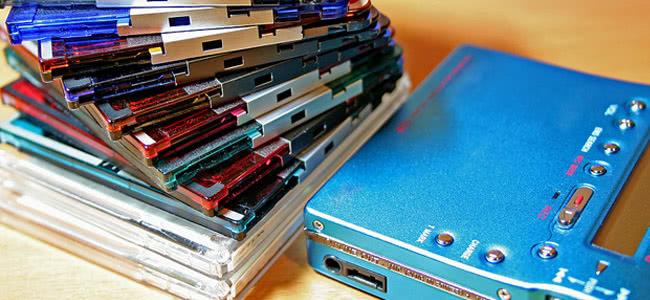In another case of an obscure Sony audio format has gone the way of its deceased predecessors, like HD DVD, UMD, and Betamax, with news that’ll have less people mourning its passing and more exclaiming ‘who knew they were still making those!?’
Following on from the technology giant axing its official Cassette Walkman line last December, Sony has ceased production on another of its outdated product lines in the news that the MiniDisc is headed for the grave, and doubly for most, the news that it wasn’t even still around.
As Mashable reports, Sony Corp. in Japan is planning to wind down shipments and manufacture of the last of its MiniDisc players in March after 21 years of production, drawing a curtain on one of the company’s less successful digital media formats.
Sony notes that they will continue to produce MiniDisc cartridges, and provide repairs and customer service for the format, but will cease production on all players.
Though its reign (if you could even call it that) was brief, the MiniDisc was one of the first commercially available digital music players in the pre-iPod era of portable music. Of course Apple’s product revolution came along and swept away the CD, cassette, and MiniDisc formats that Sony had spent nearly a decade or more cultivating.
It might seem like an absurdity in today’s music landscape… but back in the early 90s, the MiniDisc seemed logical, and even a little bit futuristic.It might seem like an absurdity in today’s music landscape of tooth-sized iPod shuffles that hold 2GB worth of data and the influx of streaming services that piggybank off smartphones, but back in the early 90s, the MiniDisc seemed logical, and even a little bit futuristic.
For all intents and purposes, the MiniDisc was like a digital iteration of the traditional cassette tape, but instead of analogue it used an optical disc – encased in small plastic cartridges – that could be used to record music from an optical output (such as on a CD player), through an in-built microphone, or simply purchasing pre-recorded albums and material.
The MiniDisc first launched in 1992 touted as smaller, sleeker alternative for portable music users, as TIME documents, the first recordable MZ1 player, cost an extravagant $750, while a playback-only model was still priced at a pricey $550.
The expensive price tag, especially in comparison to the affordability of other portable players, seriously hurt the MiniDisc’s launch, flopping at a disappointing 50,000 units sold in its first year.
It never really took off, and after many years as a niche item, Sony relaunched the product in 1998 with a $30 million marketing campaign focusing on the product’s re-writeable format that could be used as another, personalised item in the music collector’s arsenal, rather than replace their music collection.
Come the turn of the century, Steve Jobs and his crack teem of technology engineers were about to gift the world with a complete change in the musical landscape with the birth of the iPod, but for Sony, who was signing up and releasing many of their artist stable to release records through the MiniDisc format, they though they were ahead of the curve.
As demonstrated by the short-sightedness of major labels in failing to develop anti-piracy measures into the development of the Compact Disc, the MiniDisc is yet another case of a good idea that only looked a year or two ahead, leading it to go the way of the cassette tape – becoming a curio, rather than a leader in its field.
RIP MiniDisc 1992-2013.




































